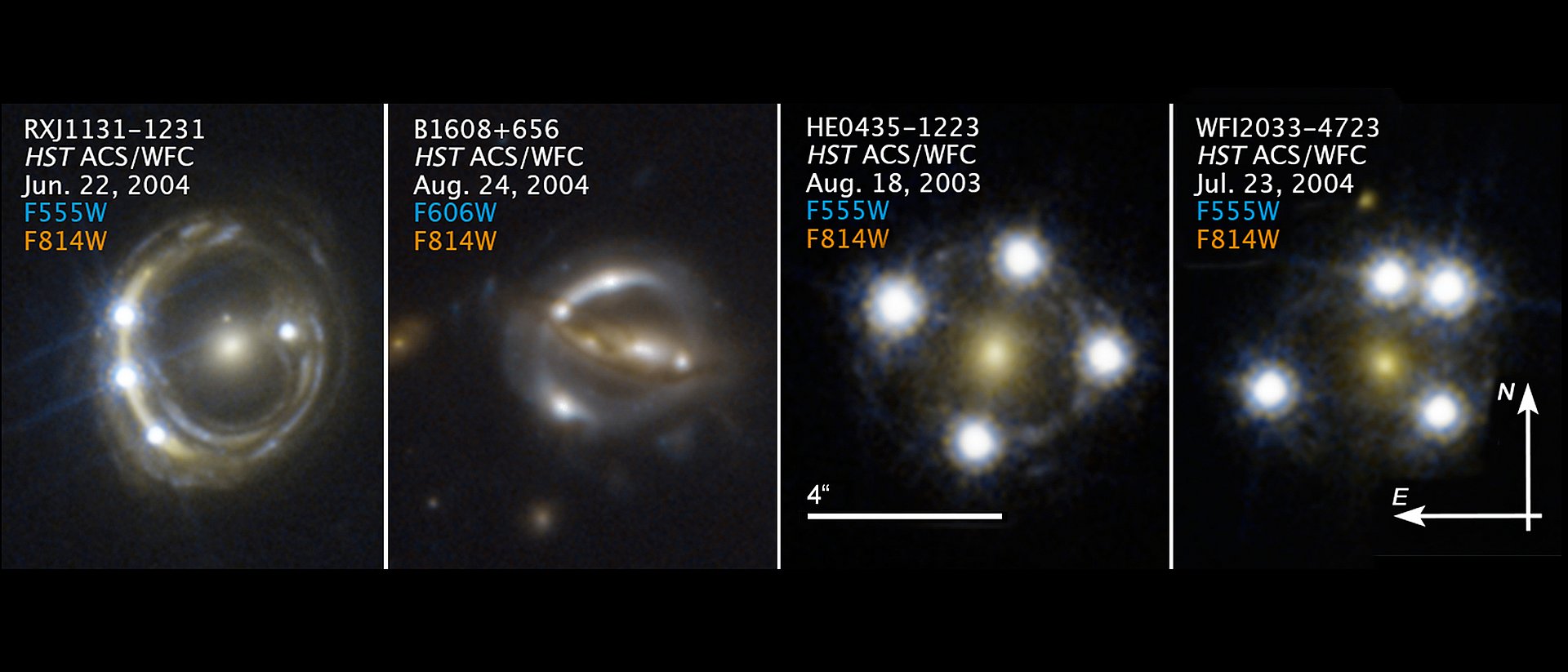New measurement of the universe's expansion rate strengthens call for new physics
New Hubble constant measurement using cosmic lenses

Knowing the precise value for the Hubble constant, a measure for how fast the universe expands, is important for determining the age, size, and fate of our cosmos. Unraveling this mystery is one of the greatest challenges in astrophysics.
An international team, led by Sherry Suyu, professor at the Technical University of Munich (TUM), group leader at the Max Planck Institute for Astrophysics (MPA) and visiting scholar of the Academia Sinica Institute of Astronomy and Astrophysics in Taipei, Taiwan, has now measured the universe's expansion rate completely independent of previous methods.
This latest value for the Hubble constant represents the most precise measurement yet using gravitational lensing, where the gravity of a foreground galaxy acts like a giant magnifying lens, amplifying and distorting light from background objects. Through the lensing effect, multiple images of the same background object appear around the foreground galaxy.
Depending on the position of the object behind the foreground galaxy, the light of the different images has to travel over unlike distances to reach the observer. Brightness fluctuations of the background object therefore arrive at different times for each of the multiple images. The time delay can be measured in lensed quasar systems, where quasars are extremely distant cosmic streetlights produced by active black holes.
A worldwide effort
The team of astrophysicists is dubbed H0LiCOW (H0 Lenses in COSMOGRAIL's Wellspring). COSMOGRAIL is the acronym for Cosmological Monitoring of Gravitational Lenses, a large international project whose goal is monitoring gravitational lenses. "Wellspring" refers to the abundant supply of quasar lensing systems.
For their latest measurement, the team used new data from the Hubble Space Telescope as well as from the ESO/MPG 2.2 m telescope at La Silla, ESO’s Very Large Telescope, wide-field imaging from the Dark Energy Survey, all three in Chile, and high-resolution Adaptive Optics imaging from Keck Observatory, Hawaii.
H0LiCOW and other recent measurements suggest a faster expansion rate in the local universe than was expected based on observations by the European Space Agency's Planck satellite of how the cosmos behaved more than 13 billion years ago.
Significant differences
The researchers calculated a value for the Hubble constant of 73 kilometers per second per megaparsec (with 2.4 percent uncertainty). The team's measurement is close to the value of 74 calculated by the SH0ES team (Supernova H0 for the Equation of State). The SH0ES measurement is based on gauging the distances to galaxies near and far from Earth by using Cepheid variable stars and supernovas as measuring sticks to the galaxies.
The SH0ES and H0LiCOW values significantly differ from the Planck number of 67, strengthening the tension between Hubble constant measurements of the local universe and the predicted value based on observations of the early universe.
New physics needed to account for the mismatch
“While our first results already hinted at this high value for the Hubble constant, we are now more certain that there is indeed a systematic difference between the values at early and late cosmic times,” explains Suyu.
Dr. Stefan Taubenberger, team member at the MPA, further adds: “Our H0LiCOW value is significantly higher than Planck’s value – scientifically speaking, with more than 3-sigma significance. Combined with the SH0ES measurement the significance increases even further.”
The gulf between the two values has important implications for understanding the universe's underlying physical parameters and may require new physics to account for the mismatch. “If these results do not agree, it may be a hint that we do not yet fully understand how matter and energy evolved over time, particularly at early times,” said Suyu.
Refining the measurements
Starting in 2012, the H0LiCOW team now has Hubble images and time-delay information for 10 lensed quasars and intervening lensing galaxies. The team will continue to search for and follow up on new lensed quasars in collaboration with researchers from new programs. The team's goal is to observe 30 more lensed quasar systems to reduce their uncertainty for the Hubble constant measurement to one percent.

Results presented at the 235th meeting of the American Astronomical Society in Honolulu, Hawaii, Jan 8, 2020
H0LiCOW XIII. A 2.4% measurement of H0 from lensed quasars: 5.3 σ tension between early and late Universe probes
Kenneth C. Wong, Sherry H. Suyu, Geoff C.-F. Chen, Cristian E. Rusu, Martin Millon, Dominique Sluse, Vivien Bonvin, Christopher D. Fassnacht, Stefan Taubenberger, Matthew W. Auger, Simon Birrer, James H. H. Chan, Frederic Courbin, Stefan Hilbert, Olga Tihhonova, Tommaso Treu, Adriano Agnello, Xuheng Ding, Inh Jee, Eiichiro Komatsu, Anowar J. Shajib, Alessandro Sonnenfeld, Roger D. Blandford, Leon V. E. Koopmans, Philip J.Marshall, and Georges Meylan
Monthly Notices of the Royal Astronomical Society (in press) - preview at arvix.org
Technical University of Munich
Corporate Communications Center
- Dr. Andreas Battenberg
- battenberg@zv.tum.de
- presse@tum.de
- Teamwebsite
Contacts to this article:
Prof. Dr. Sherry Suyu
Technical University of Munich
Max Planck Institute for Astrophysics
Garching, Germany
Tel.: +49 89 30000 2015 - E-Mail
Dr. Stefan Taubenberger
Max Planck Institute for Astrophysics
Tel.: +49 89 30000 2019 - E-Mail
